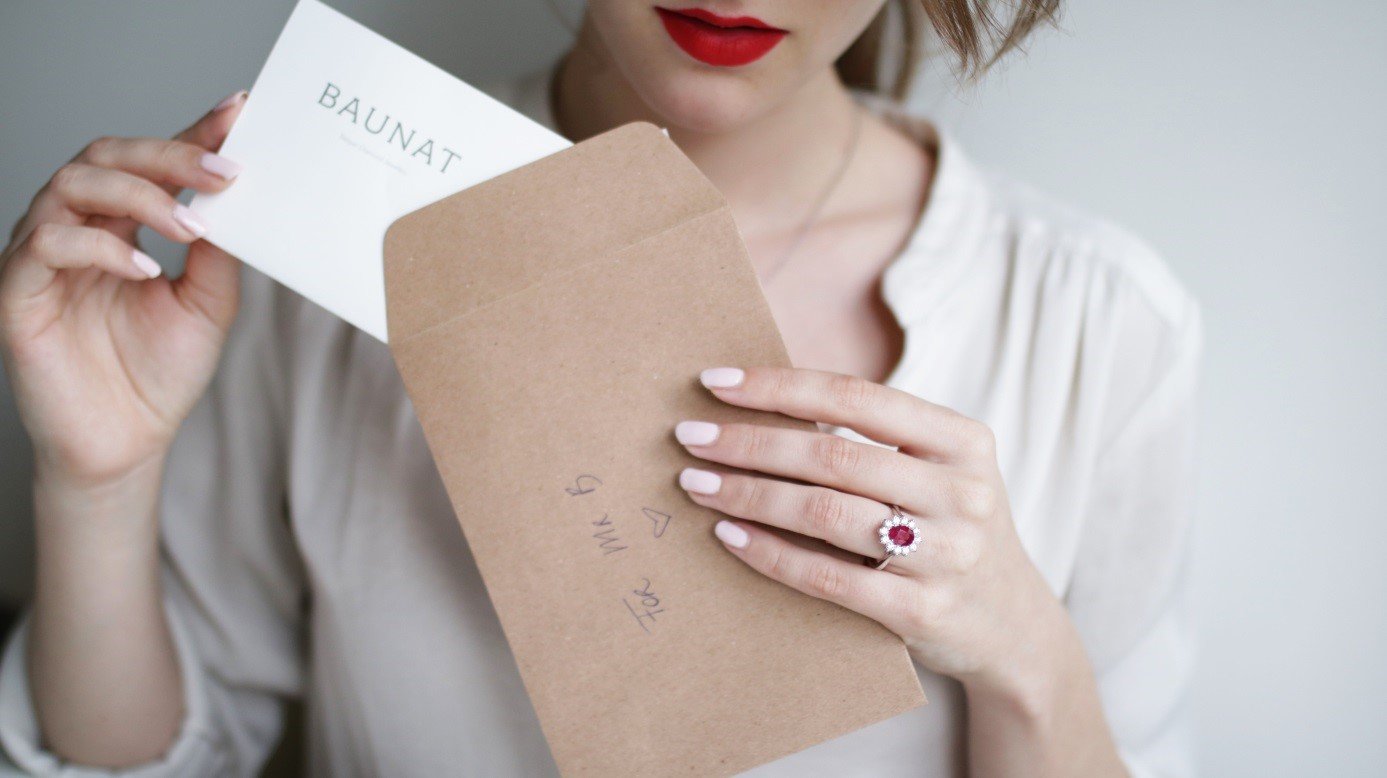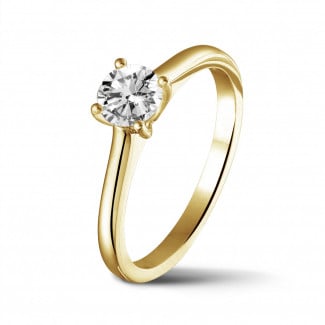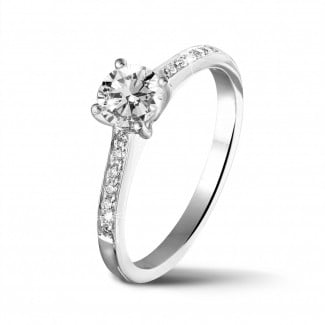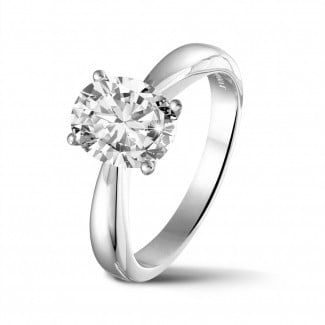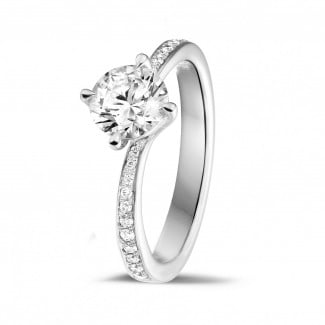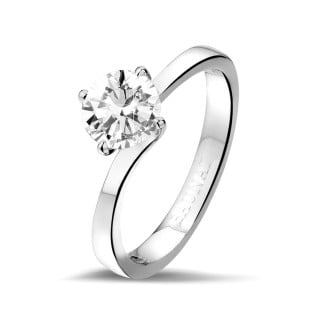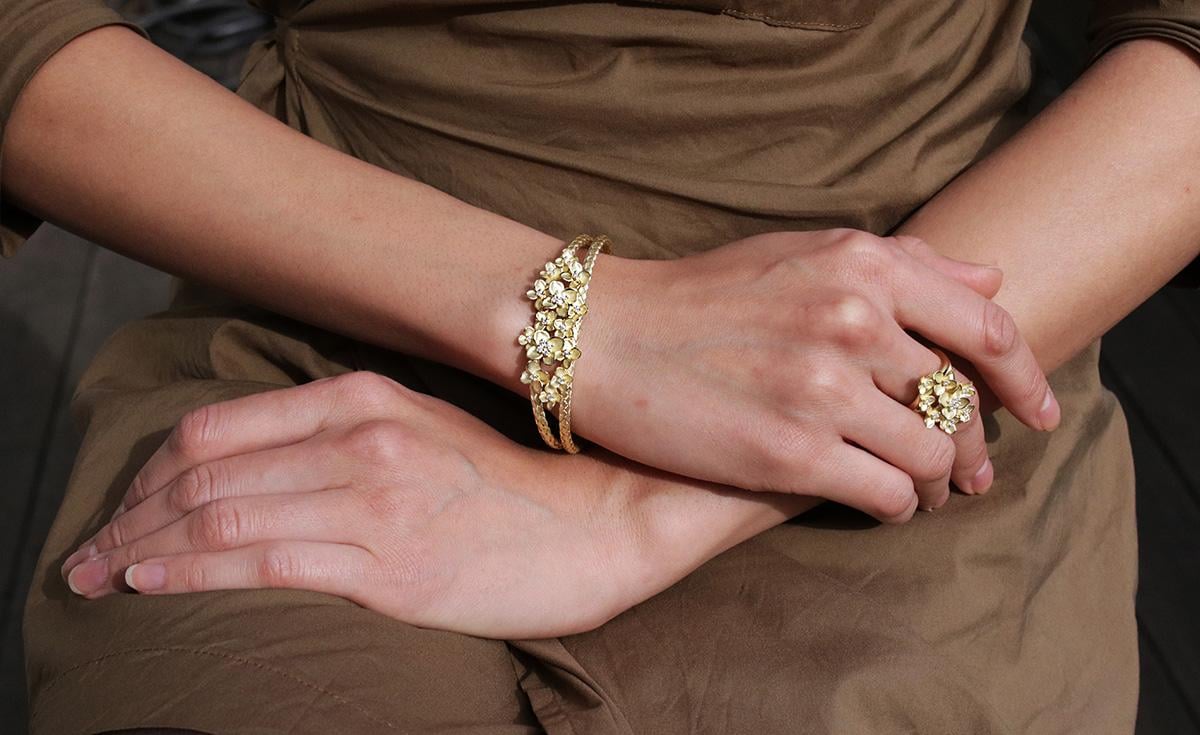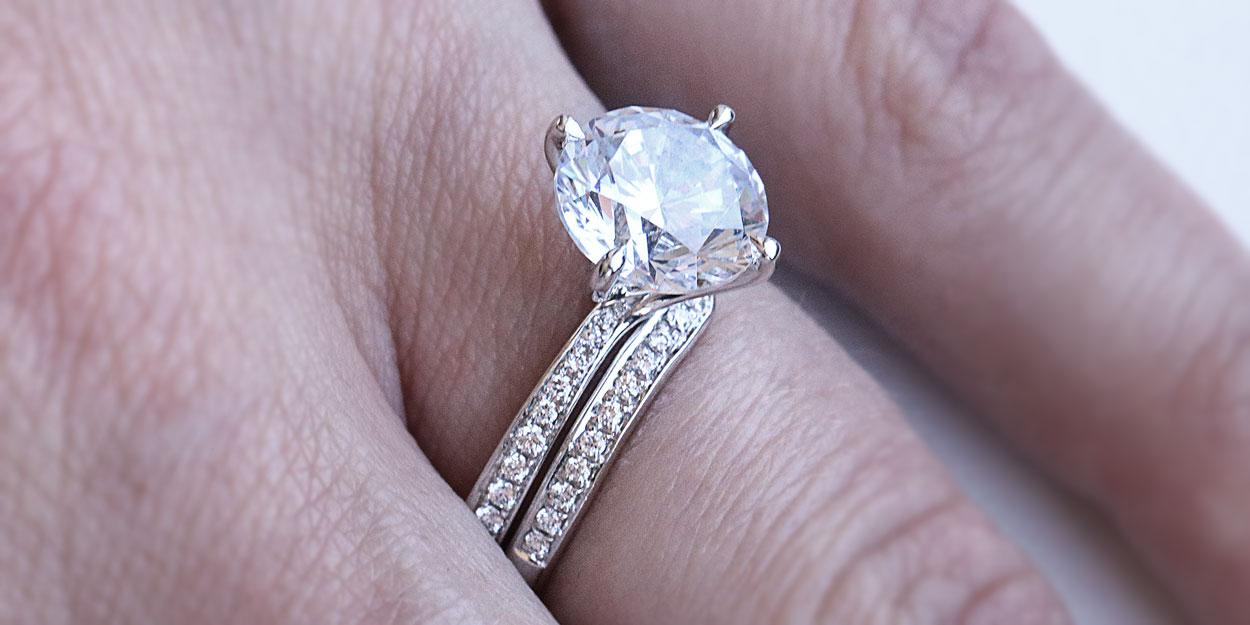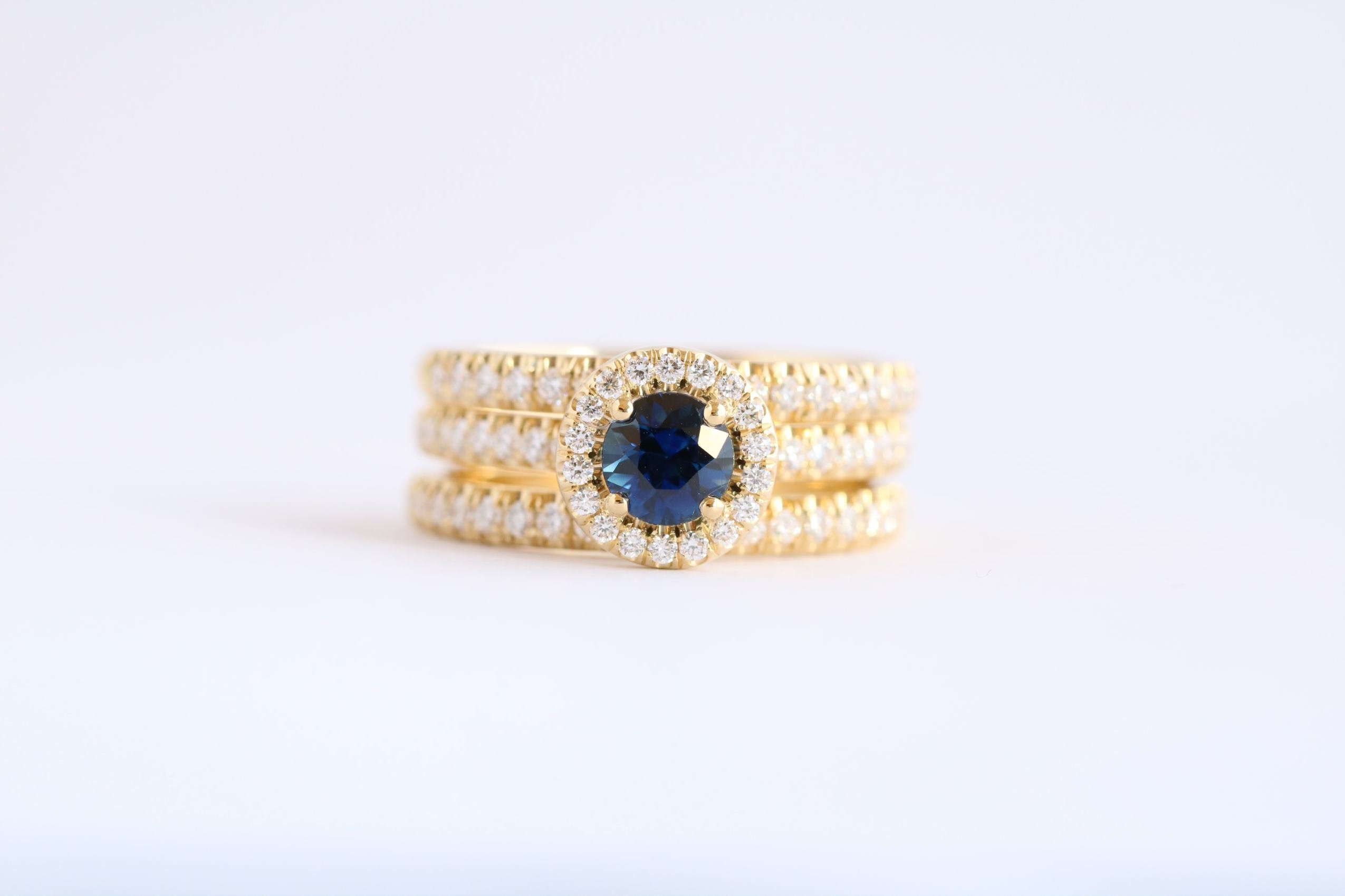Inspirational insights
Blogs in the spotlight
- How do I buy the perfect diamond ring?
- Choosing the perfect wedding ring
- Buying an engagement ring: expert tips & tricks
- Which earrings are the right ones for you?
- How to choose the perfect diamond bracelet?
- How to choose a necklace for ladies?
- Take your time in choosing your watch
- What's the right jewellery for each occasion?
- Why buy diamond jewellery online?
- A guide to building up your jewellery collection
- What types of precious metals are there?
- What types of precious metals are there?
- Jewellery trends and innovations in 2020
- What sorts of diamond setting are there?
Should you choose a matte or shiny finish for you engagement ring?
- How does the precious metal of an engagement ring become matte or shiny?
- What are the advantages and disadvantages of matte engagement rings compared to shiny ones?
When choosing an engagement ring you are presented with many different options that can transform the look and feel of a ring even if the basic shape is the same. Your options start with the choice of the precious metal and the choice of the diamond, and go all the way to the question whether the metal should be polished matte or shiny.
Most viewed diamond jewels
.
How does the precious metal of an engagement ring become matte or shiny?
During this process, exactly the opposite happens. The engagement ring surface is slightly roughened and the light is less reflected. Both effects or finishes can also be combined together. For example, one part of the ring appears shiny and the other matte.
With matte engagement rings, a distinction is also made between different types of matting. One possible finish is sand matte when the ring is blasted with quartz sand, which leaves a slightly dotted and relatively robust surface. Furthermore, there are transverse matte and longitudinal matte finishes, these styles result from sanding in a certain direction. Brushed ice matte creates a somewhat coarser look reminiscent of ice crystals.
In general, large engagement rings and wider ring bands are better suited for matte engagement rings than very fine and delicate rings, where the optical effect is lost due to the small surface of the ring.
What are the advantages and disadvantages of matte engagement rings compared to shiny ones?
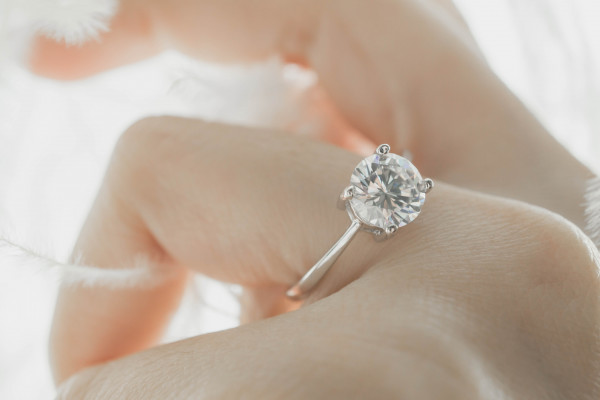
Ultimately, being cautious when cleaning and caring for your ring is the best advice, we can give you and don’t risk damaging the setting or the gemstone.
Bottom line is that shiny finish is easier to care for and one of the most popular choices for an engagement ring. Nevertheless, the matte finish is becoming fashionable choice for rings due to new designs and technological innovations.
Would you like to buy an engagement ring and get advice on the design choice? The team of experts at BAUNAT is at your disposal and looks forward to hearing from you.
What else would you like to know about our engagement rings?
Frequently asked Questions
Which engagement ring to choose?
You can't go wrong with giving an engagement ring with a solitaire brilliant (round diamond) of 1.00 carat. With its dazzling sparkle as a symbol of your love, this is the ultimate classic for a very good reason. Although there's nothing to prevent you going for a more personal touch like a trilogy ring with 3 diamonds, or a halo ring. And other cuts (especially the heart shape), or even a superbly coloured sapphire, ruby, or emerald as gemstone are also possibilities.
What’s the difference between platinum and white gold?
Platinum and white gold are both precious metals. Platinum is rarer and more expensive than white gold. It’s stronger too. White gold has a distinct shiny silver colour, whereas platinum looks more greyish-white. Both are mixed with other metals for strength. A ring in white gold is more traditional and more symbolic than a platinum one.
Learn more about the differences between white gold and platinum or instantly choose your favourite precious metal from BAUNAT.
What is white gold?
White gold is a precious metal with a silver shine, often used for jewellery. It is created by mixing yellow gold with other white shiny metals, such as silver and palladium. Pure white gold doesn’t exist. The white gold ring has always been a very popular choice for wedding rings. White gold earrings are the most versatile.
Learn more about white gold or instantly choose your favourite precious metal from BAUNAT.

Fabienne Rauw
- BAUNAT Antwerp
- My Linkedin profile - Contact me
 Design collections
Design collections Stackable Rings
Stackable Rings Ruby, sapphire & emerald
Ruby, sapphire & emerald Bestsellers
Bestsellers New arrivals
New arrivals Watches
Watches Cufflinks
Cufflinks Rings for men
Rings for men Diamond
Diamond Sapphire
Sapphire Ruby
Ruby Emerald
Emerald Yellow diamond
Yellow diamond Black diamond
Black diamond
 Diamond rings
Diamond rings Sapphire rings
Sapphire rings Ruby rings
Ruby rings Emerald rings
Emerald rings Yellow diamond rings
Yellow diamond rings Black diamond rings
Black diamond rings
 Stackable rings
Stackable rings Cocktail rings
Cocktail rings Rings for men
Rings for men Bestsellers
Bestsellers Diamond rings
Diamond rings Sapphire rings
Sapphire rings Ruby rings
Ruby rings Emerald rings
Emerald rings Yellow diamond rings
Yellow diamond rings Black diamond rings
Black diamond rings
 Solitaire
Solitaire Dangle
Dangle Diamond earrings
Diamond earrings Sapphire earrings
Sapphire earrings Yellow diamond earrings
Yellow diamond earrings Black diamond earrings
Black diamond earrings
 Solitaire
Solitaire 3 stones
3 stones Halo
Halo Gradient
Gradient Diamond necklaces
Diamond necklaces Sapphire necklaces
Sapphire necklaces Yellow diamond necklaces
Yellow diamond necklaces Black diamond necklaces
Black diamond necklaces
 Gradient
Gradient White gold
White gold Yellow gold
Yellow gold Red gold
Red gold Platinum
Platinum Diamond bracelets
Diamond bracelets Yellow diamond bracelets
Yellow diamond bracelets Black diamond bracelets
Black diamond bracelets
 View watches
View watches View watches
View watches Swiss Made
Swiss Made Swiss Collection limited edition
Swiss Collection limited edition Manufacturing process
Manufacturing process Manual or Automatic watch
Manual or Automatic watch Sapphire or mineral glass
Sapphire or mineral glass
 Rings
Rings Necklaces
Necklaces Bracelets
Bracelets Sapphire
Sapphire
 Engagement rings
Engagement rings Earrings
Earrings Necklaces
Necklaces Bracelets
Bracelets
